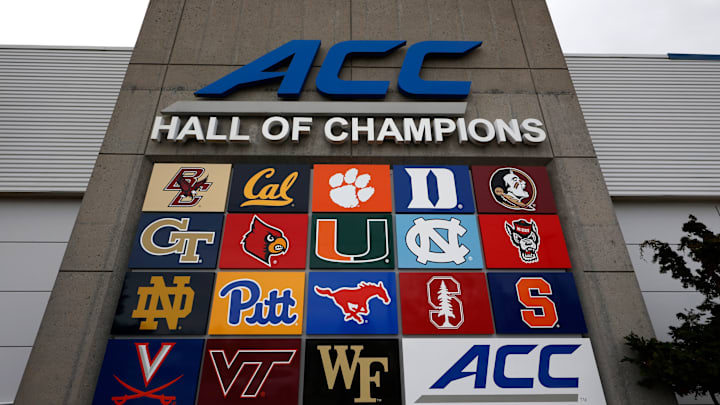With all the noise surrounding the College Football Playoff’s future, particularly the controversial “4-4-2-2-1” model that’s being floated around, it’s becoming painfully obvious: the ACC and Big 12 are playing defense. And in today’s college football landscape, playing defense gets you left behind.
That proposed model—which would guarantee four playoff bids to both the SEC and Big Ten, two each to the ACC and Big 12, one to either Notre Dame or a top Group of Five team, and just three at-large spots—isn’t subtle. It’s a clear message from the power brokers: the SEC and Big Ten are driving the bus, and everyone else better find a seat or get run over. So here’s a thought: what if the ACC and Big 12 stopped competing for scraps and started building something together?
A merger between the two conferences might sound drastic—but maybe that’s exactly what they need. If the sport is heading toward a future where power is concentrated in just two conferences, the only way to balance the scales might be by creating a new third.
A Merger Could Shift the Power Dynamics
Let’s be real: television executives have a huge hand in shaping the future of the sport. When the SEC and Big Ten started gobbling up big-name brands and negotiating billion-dollar media deals, it wasn’t because of championships—it was because of viewership. If the ACC and Big 12 were to combine their top brands under one umbrella, suddenly you’d have a conference that features Clemson, Florida State, Miami, North Carolina, Oklahoma State, Texas Tech, Kansas State, Baylor, Utah, and Arizona, just to name a few.
That’s not a “Tier 2” lineup. That’s a television-friendly, revenue-generating group. And with more competitive matchups and fewer “soft” Saturdays, it could be exactly what networks want in a third major package.
More importantly, it could force the hand of CFP decision-makers. If the new mega-conference starts pulling playoff-worthy viewership numbers and generating buzz every weekend, it becomes a lot harder to justify a system that gives four guaranteed bids to two leagues and only four to this new alliance with so many teams.
Realignment Already Opened the Door
College football realignment has already blurred the lines of tradition. The Big 12 is no longer a Texas-and-Oklahoma conference. The ACC is still holding onto its grant of rights, but Florida State and Clemson are publicly flirting with exits. With so many programs already feeling disconnected from their “conference identities,” a bold merger wouldn’t be as disruptive now as it would have been five years ago. In some ways, it might actually feel like a solution.
By merging, the ACC and Big 12 wouldn’t just survive—they’d thrive. They’d get a seat back at the grown-up table, giving their schools better positioning in playoff negotiations, better access to future media rights deals, and more say in the structure of college football moving forward.
Why not take the best teams from both of those conferences and create a conference that at the very least comes close to rivaling what the SEC and Big Ten are putting out?
The Matchups Would Be Worth the Chaos
Think about the games we’d get on a weekly basis. Clemson vs. Utah. Miami vs. Arizona. North Carolina vs. Kansas. Florida State vs. TCU. That’s a better slate than what either conference is currently working with on its own. And let’s be honest, if we’re moving toward superconferences, let’s at least make them fun.
The new conference would likely need to be divided up into four divisions or a pod system, and still allow for plenty of crossover games to keep rivalries alive. It's at least an idea that should be on the table for those two leagues moving forward.
